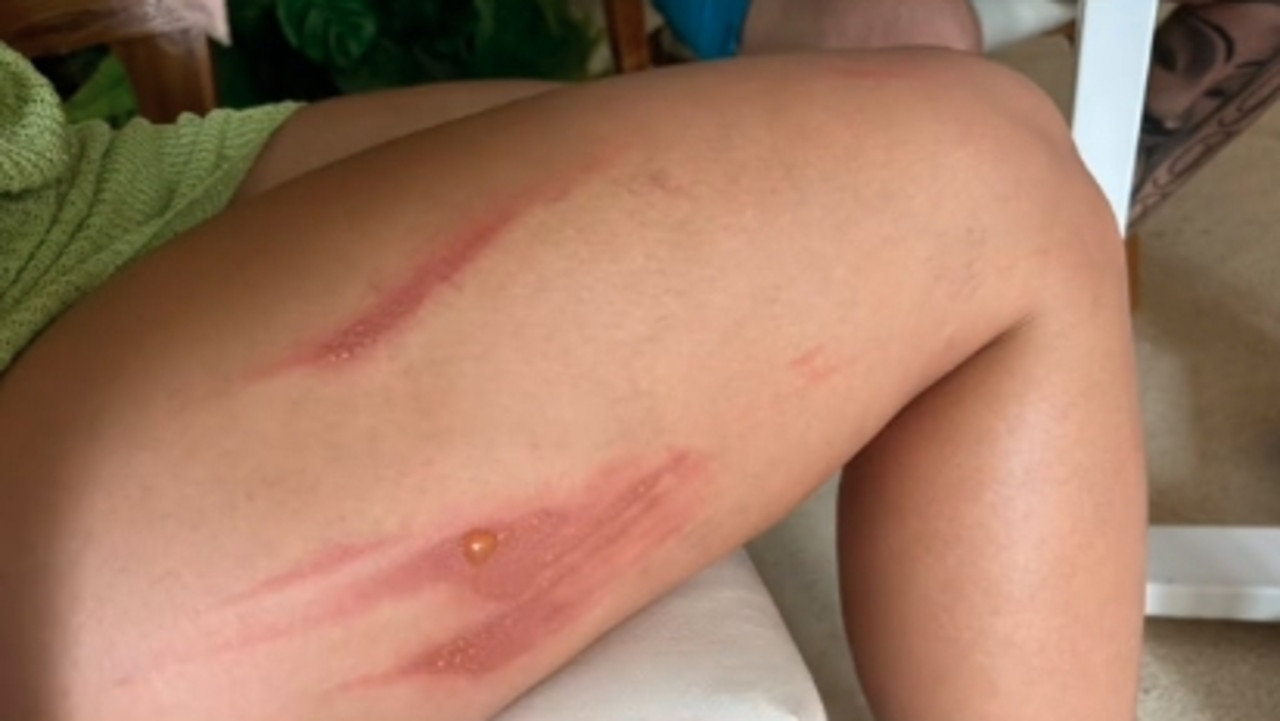Tiktokker Natalie Carroll shares her extreme pain in Bali after coming into contact with a Tomcat beetle
An Aussie woman was left in extreme pain after she came into contact with an unfriendly creature in Bali.

An Aussie enjoying her Bali holiday has had to spend the majority of the trip in excruciating pain after coming into contact with a toxic beetle.
Natalie Carroll, 24, shared her medical horror on TikTok, explaining to her 24,000 followers how she woke up with to blisters on her leg on November 7.
Initially, she thought it might have been a jellyfish sting from swimming in the ocean the day before.
But she called the doctor when she noticed there were inflamed streaks going down her legs that started to turn “extremely painful”.

“When I woke up, I had some little blisters and I was like, ‘I need to call a doctor’,” she said on social media.
Ms Carroll said she was given some oral antibiotics to prevent the wound from getting infected.
But as the welts got larger, so did the pain.
“I kept having to put this ointment on it to keep it concealed from the Balinese air because it’s dirty here,” Ms Carroll said.
“Honestly the worst part about this is just not being able to swim for my entire trip and Bali is so hot … and I can’t even shower properly.
“I can’t get it wet at all.
“24 hours of that red mark and then this is what I then had on my leg … these, I can’t even describe the pain.”


Ms Carroll said her doctor believes she came into contact with a Rove beetle, locally known as a Tomcat.
She said she thinks the beetle may have crawled over her leg while she was sleeping and she brushed it away without realising.
While Tomcat beetles do not bite or sting their victims, the insect can release an aggressive toxin which causes severe burning, stinging, itching and blistering when the secretion comes into contact with the skin, according to the Australian Department of Health.
It’s advised people who come into contact with the beetle should immediately wash the site with warm soapy water and apply a cold compress, antiseptic lotion or antihistamine cream to reduce the contamination.






